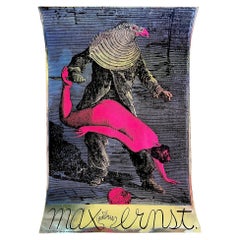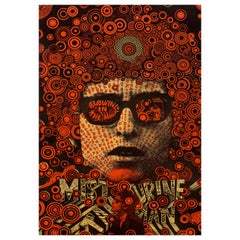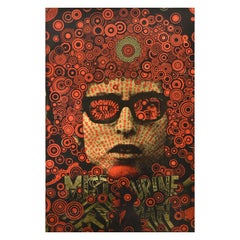Martin Sharp
20th Century British Mid-Century Modern Posters
Paper
Recent Sales
Vintage 1960s British Post-Modern Posters
Paper
Vintage 1960s British Posters
Paper
Vintage 1960s British Post-Modern Posters
Paper
Vintage 1960s American Mid-Century Modern Posters
Paper
Vintage 1970s Canadian Native American Native American Objects
Pine
20th Century British Mid-Century Modern Posters
Paper
Vintage 1960s British Post-Modern Posters
Paper
People Also Browsed
21st Century and Contemporary Italian Mid-Century Modern Chandeliers and...
Brass
2010s Turkish Arts and Crafts Chairs
Beech
2010s Mexican Modern Cabinets
Steel
21st Century and Contemporary Italian Mid-Century Modern Sectional Sofas
Silk, Velvet
2010s Georgian Post-Modern Wall Lights and Sconces
Clay
20th Century British Art Deco Night Stands
Walnut
20th Century Italian Mid-Century Modern Floor Lamps
Metal
20th Century Italian Mid-Century Modern Sofas
Wood, Wool
20th Century French Mid-Century Modern Planters and Jardinieres
Metal
21st Century and Contemporary Landscape Paintings
Canvas, Oil
20th Century Italian Mid-Century Modern Candlesticks
Metal
21st Century and Contemporary Surrealist Figurative Paintings
Canvas, Linen, Oil
20th Century French Art Deco Scientific Instruments
Wood
2010s Spanish Mid-Century Modern Wall Lights and Sconces
Metal
20th Century Italian Mid-Century Modern Coffee and Cocktail Tables
Travertine
20th Century French Mid-Century Modern Doors and Gates
Metal, Chrome
Martin Sharp For Sale on 1stDibs
How Much is a Martin Sharp?
Finding the Right Posters for You
Add a welcome personal touch to your space and tie your distinctive interior scheme together by introducing antique and vintage posters to any and every room of your home.
In the late 19th century, following the advent of text-heavy posters printed from woodblocks for use in taverns and shop windows, hand-drawn poster art had become commonplace in regions such as France, England and the United States. Well-known illustrators were commissioned to produce decorative posters to advertise political campaigns, theatrical events, books, household goods and other items. Early poster artists used a printmaking technique called lithography, which sees drawings or paintings created on a stone (or metal) surface with an oil-based substance, such as a greasy crayon or tusche (an oily wash). The image is eventually affixed to the surface by means of a chemical reaction, and ink adheres to certain sections of the surface while non–image areas are made to repel the ink.
If you wanted a color lithograph in the early days, the number of stones prepared had to match the number of colors you commissioned for the poster. French painter Jules Chéret, widely known as the father of the modern poster, designed some of history's most popular lithographic posters that featured color. Today, Chéret’s art is highly collectible, along with original works by Czech painter and decorative artist Alphonse Mucha, whose posters advertising theatrical productions helped define Art Nouveau.
Over time, poster artists transitioned to more advanced techniques. Using silkscreens, woodblocks and photolithography, painters and illustrators printed larger quantities at a faster rate.
If you’ve finally tracked down that vintage movie poster, mid-century modern promotional travel poster or other work and you’re looking to find out if it is valuable, distinguishing between an original poster and a reproduction can be complicated. A professional appraiser can work with you on factors such as rarity, assessing the physical condition of your poster and authenticating your piece. For now, take care of your new acquisition because conserving posters is essential in helping them retain their value. A practical conservation method is to have the work mounted on archival, acid-free paper and thin artist’s canvas, then enclosing it in a sturdy frame. (And here is a primer on how to hang wall art, be it arranged gallery-style or otherwise.)
On 1stDibs, find all kinds of posters for your home today.


